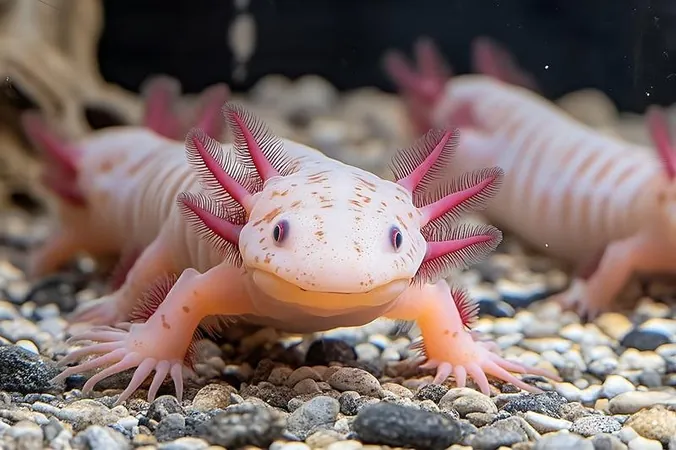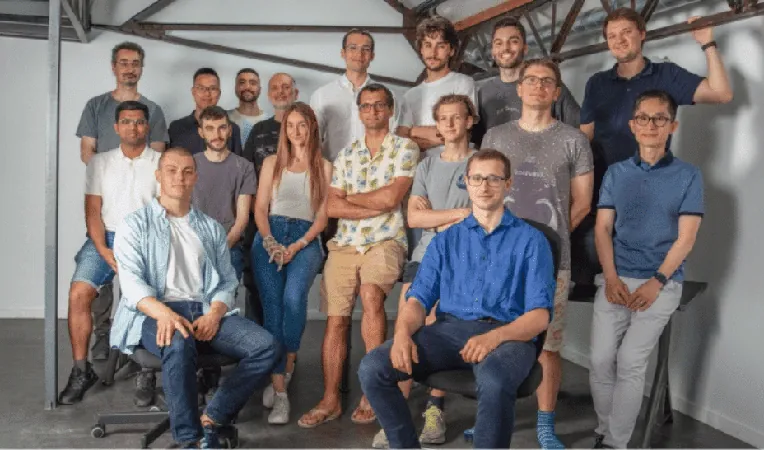
Can Axolotls Teach Us the Secret to Regrowing Limbs?
2025-06-11
Author: Mei
With their quirky smiles and vibrant gills, axolotls aren't just the stars of the pet world and popular games like Minecraft—they're also at the forefront of groundbreaking scientific research. Scientists are exploring whether humans might one day be able to regenerate lost limbs, drawing inspiration from these remarkable creatures.
Axolotls possess an extraordinary ability: they can regenerate body parts indefinitely, regardless of their age. Lose a leg? No problem! Damage to their heart or even brain? They can fix that too! This fascinating capability has positioned axolotls as the champions of regeneration.
In a recent study published in *Nature Communications*, lead researcher James Monaghan and his team from Northeastern University leveraged genetically engineered axolotls that glow in the dark to investigate the mechanics behind this astonishing regeneration process.
One key question in this field of study is how axolotls determine what to regrow after injury. If they lose their upper arm, they regenerate the whole arm; if the injury is lower, only the hand and lower arm come back. Monaghan remarked, "Salamanders have been renowned for their regenerative talents for centuries, yet the question of how they know what to recreate remains a mystery."
The team’s research indicates that a small molecule named retinoic acid—related to vitamin A and often found in skincare products—may function as a biological GPS. It directs cells on where they are in relation to the body and what part to regenerate.
By studying the glowing axolotls post-limb amputation under anesthesia, they discovered that when retinoic acid was blocked, the limbs did not regrow properly; for instance, an upper arm might appear where a lower arm should have grown. This suggests that retinoic acid is crucial for accurately signaling to cells what to regenerate.
While we are still far from replicating this regeneration in humans, accompanying researcher Prayag Murawala believes this study could help bridge that gap. "We all share the same genetic makeup. We've all developed limbs in the embryonic phase," he explains.
The real challenge lies in learning how to reactivate our genetic blueprints later in life—a feat that axolotls accomplish but humans have yet to master. Monaghan stated, "It's one of biology's oldest questions yet also one of the most futuristic concepts."
Interestingly, the rising popularity of axolotls, particularly among younger audiences, is drawing attention to this cutting-edge science. Monaghan humorously noted their prevalence in everyday life, saying, "You see axolotls at the airport, at the mall, and kids are bringing home axolotl toys all the time because of my work."
As scientists delve deeper into the mysterious world of axolotls, we inch closer to unraveling the secrets of limb regeneration—a quest both fascinating and profoundly hopeful for the future of medicine.

 Brasil (PT)
Brasil (PT)
 Canada (EN)
Canada (EN)
 Chile (ES)
Chile (ES)
 Česko (CS)
Česko (CS)
 대한민국 (KO)
대한민국 (KO)
 España (ES)
España (ES)
 France (FR)
France (FR)
 Hong Kong (EN)
Hong Kong (EN)
 Italia (IT)
Italia (IT)
 日本 (JA)
日本 (JA)
 Magyarország (HU)
Magyarország (HU)
 Norge (NO)
Norge (NO)
 Polska (PL)
Polska (PL)
 Schweiz (DE)
Schweiz (DE)
 Singapore (EN)
Singapore (EN)
 Sverige (SV)
Sverige (SV)
 Suomi (FI)
Suomi (FI)
 Türkiye (TR)
Türkiye (TR)
 الإمارات العربية المتحدة (AR)
الإمارات العربية المتحدة (AR)